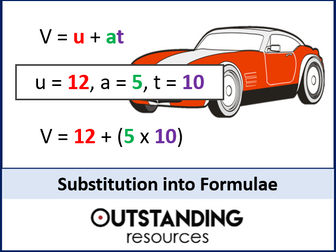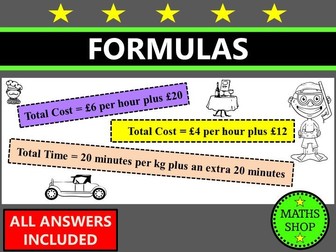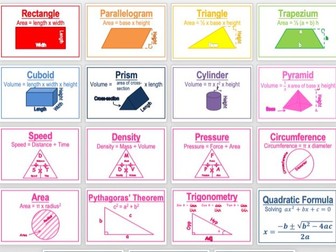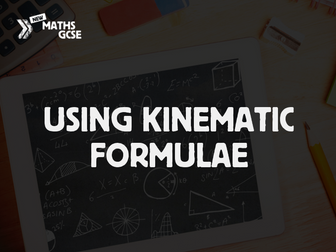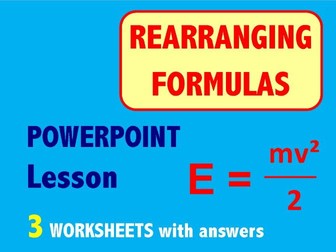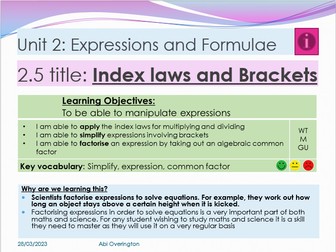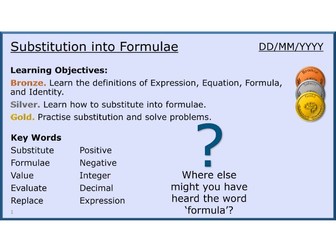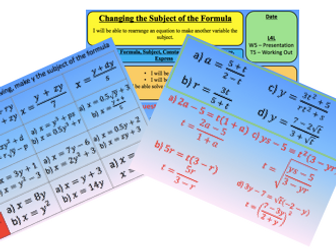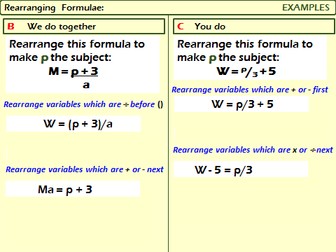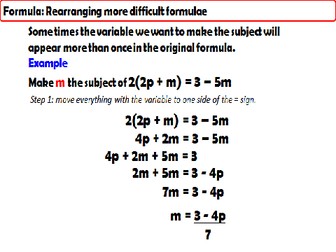
Substitution into Formulas
This is a whole lesson on Substitution into Formulas. This is the second lesson on substitution after Substitution into Expressions. There are plenty of pitfalls such as BIDMAS and this lesson is very good at highlighting areas of mistake and improving pupil understanding. This resource is ready to go with no prep required. Great for home learning, with lots of additional resources. 20-slide presentation + lots of supplementary resources.
The lesson includes:
starter
learning objectives (differentiated)
keywords
Excellent teaching slides (with custom animation)
Fantastic Examples
Handout (to support student notes)
Embedded Questions (with answers)
Worksheet (with answers)
Matching Activity (with answers)
Plenary
ALL LESSONS for teaching all the different topics of ALGEBRA are available as one BIG BUNDLE in the link below:
Substitution Lesson 1
Algebra: All Lessons
Please NOTE:
This lesson is flat-packed for copyright purposes, which means limited editing in places, but slides can be deleted, rearranged and slides can obviously be added.
Please provide a RATING with written feedback
Email outstandingresourceshelp@gmail.com if there are any issues and we will respond within 48 hours.
